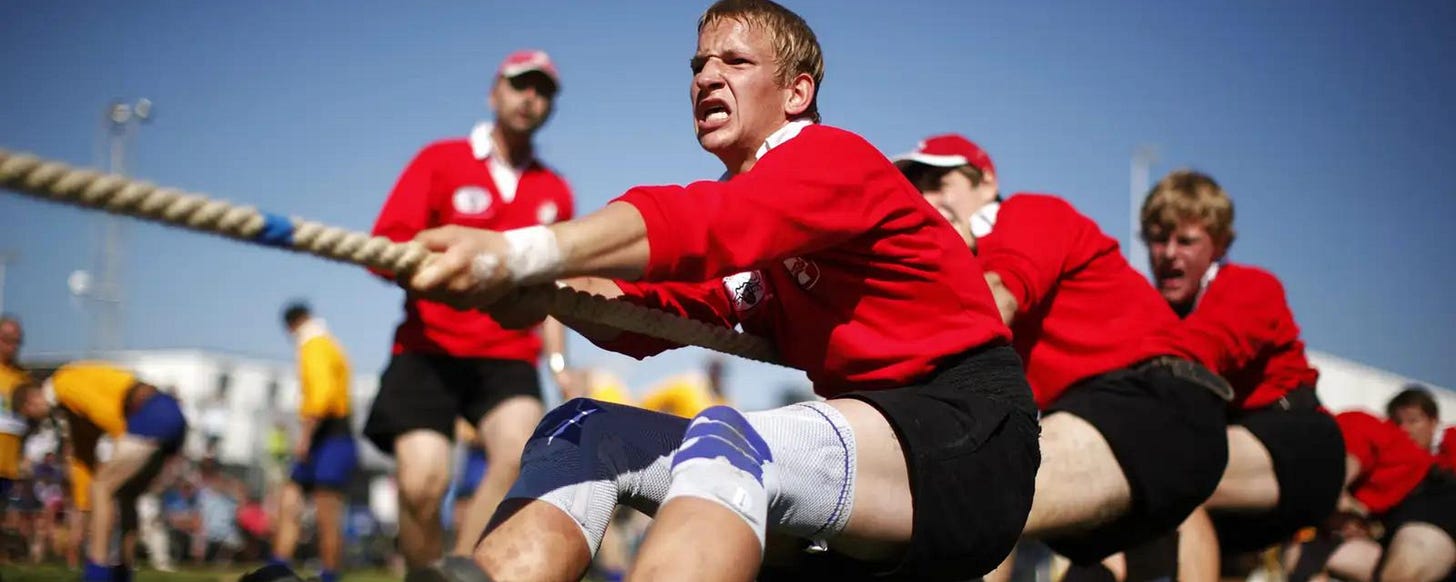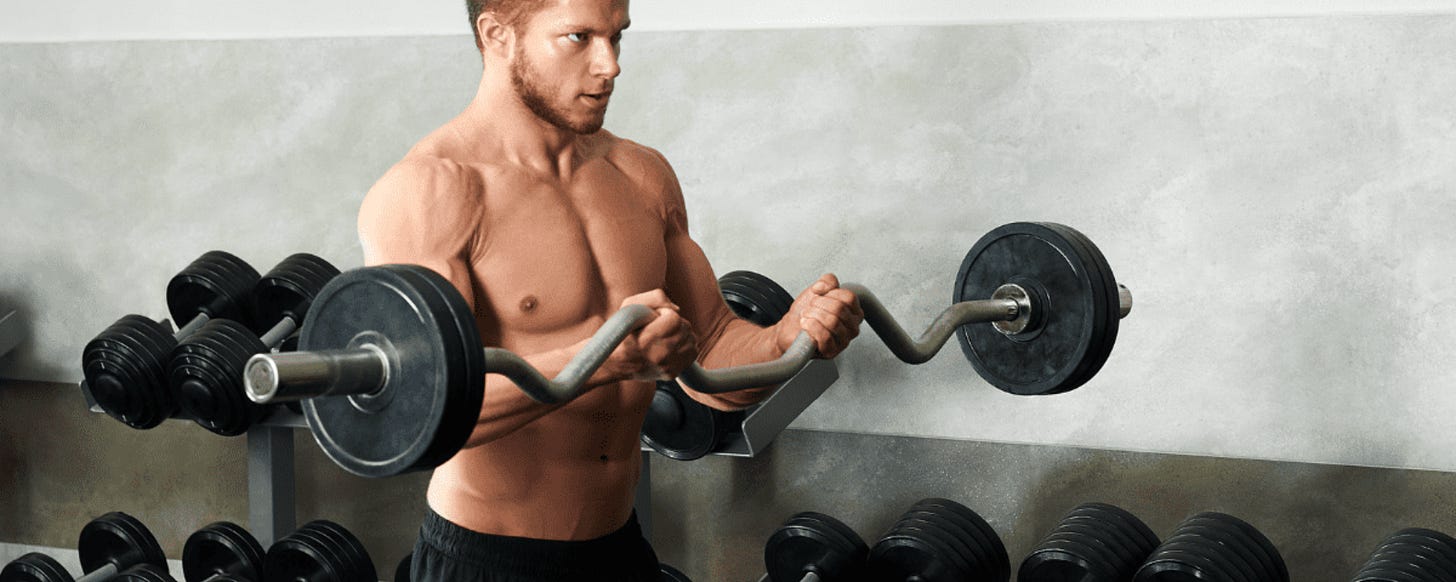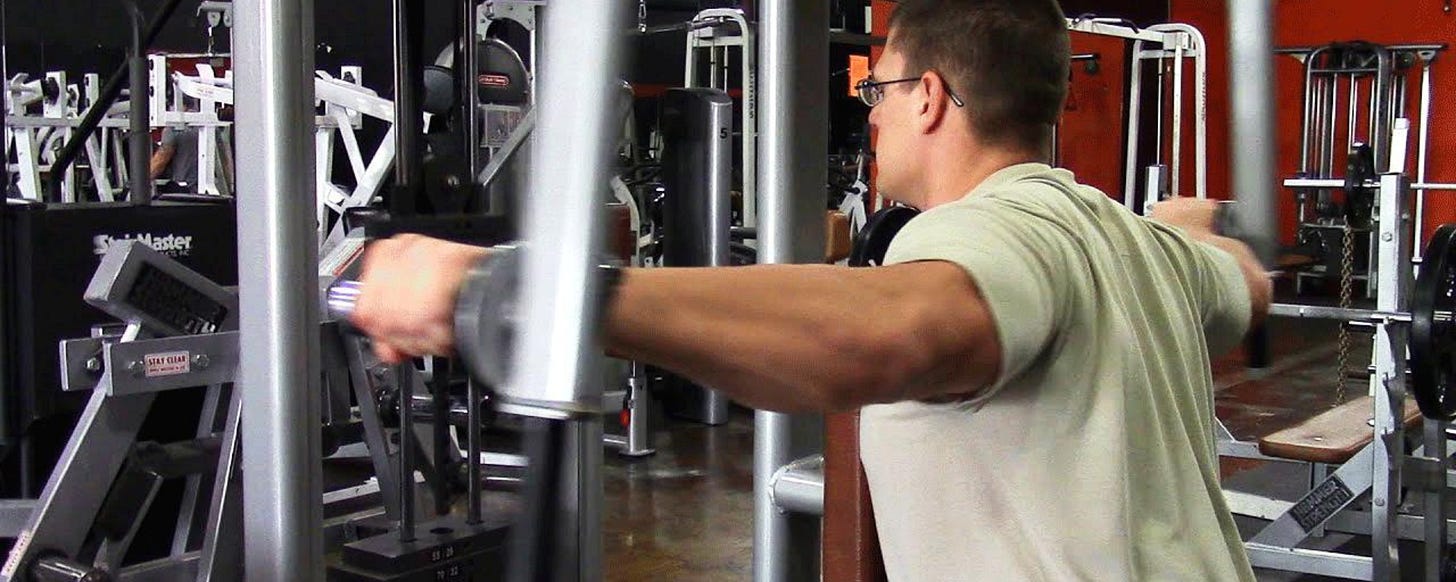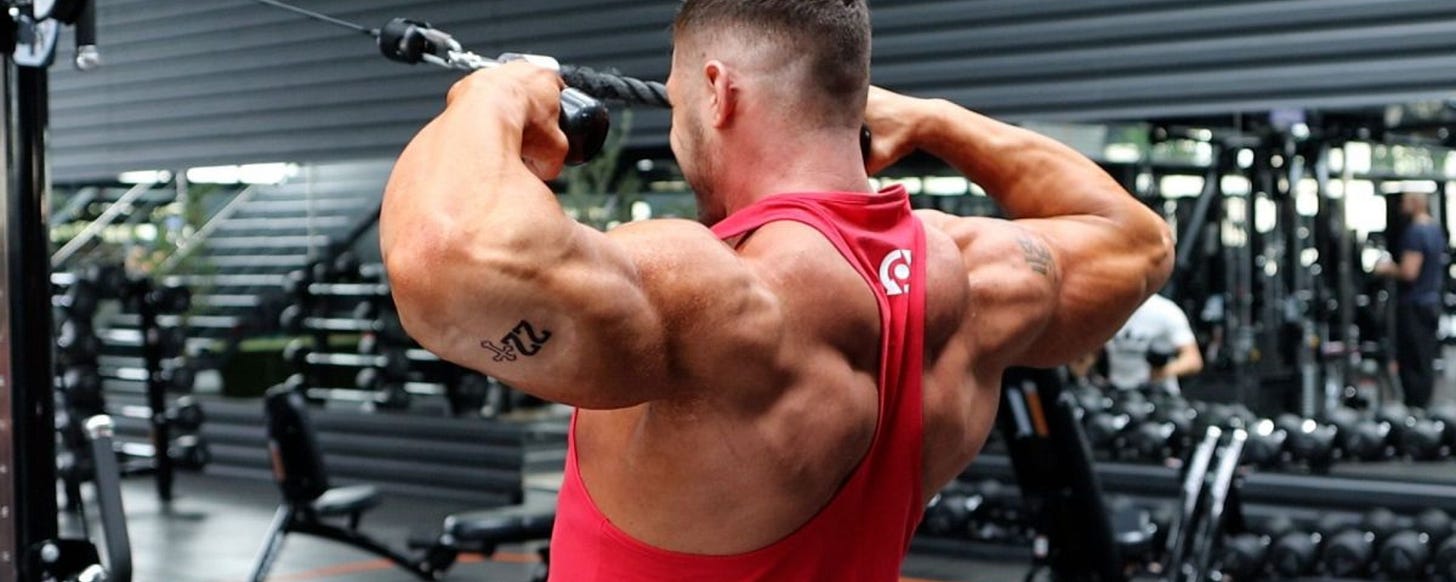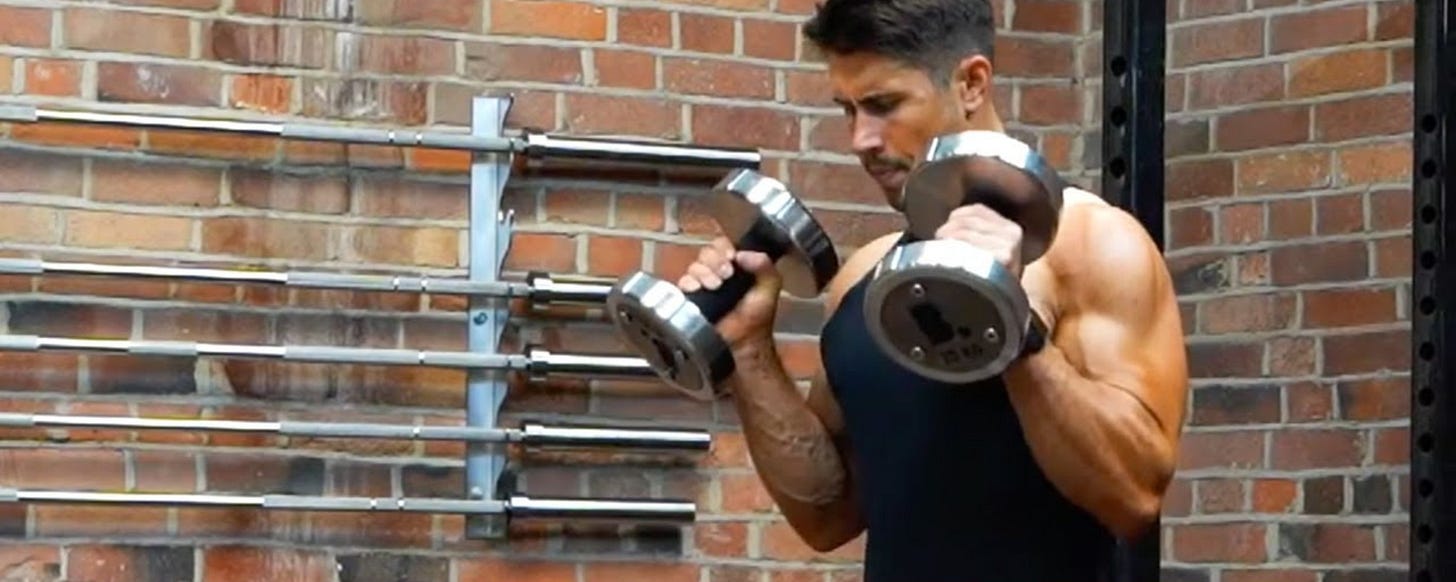Pull Day Routines for Muscle, Strength, & Fat Loss
This article isn't a Red Bull, but it'll still give you wings!
In this article:
Defining Pull Day
Reasons to include Pull Day in your training routine
Criteria for an effective Pull Day
Common Pull Day exercise options
Multiple no nonsense Pull Day routines
Community feedback
What is Pull Day?
Have you ever heard the term ‘barn door back’? How about someone having lat muscles so developed that they look like wings? A muscular back is a symbol of power. So, how do you build up those back muscles? The answer is Pull Day.
By basic definition, Pull Day zones in on the muscles we use to pull something toward our body. This includes pulling something toward us from above (vertical pull) or from in front of us (horizontal pull).
Examples of vertical pulls are Lat Pulldowns and Chin-Ups. Examples of horizontal pulls are Seated Cable Rows and Flat Bench Dumbbell Rows. Think of these motions like this; climbing up a hanging rope is a vertical pull and playing tug of war is a horizontal pull.
Regardless of whether you’re performing a vertical or horizontal pull, you’re going to be involving major muscles of your mid/upper back and large portions of your arms.
These muscles specifically include the lats (mid-back), rhomboids (mid back), teres major (mid back), traps (mid/upper back), rear deltoids (upper back), biceps (upper arms), and plenty of forearm muscles (lower arms) as well. These major areas of muscle, along with other smaller supplemental muscles, are used to pull objects toward our bodies, hence the term Pull Day.
To illustrate what Pull Day looks like, here are a few pictures of common Pull Day compound exercises:
Pull-Up (Lats, Teres Major, Rhomboids, Traps, Biceps, Forearms)
Seated Cable Row (Lats, Teres Major, Rhomboids, Traps, Biceps, Forearms)
Bent Barbell Row (Lats, Teres Major, Rhomboids, Traps, Biceps, Forearms)
Overhand Grip Lat Pulldown (Lats, Teres Major, Rhomboids, Traps, Biceps, Forearms)
The commonality between the exercises above is the motion of gripping a weight and pulling that weight toward the body. This can be done through a variety of angles and grip styles.
Compound exercises like Bent Barbell Rows and Pull-Ups should always be part of the Pull Day equation, but isolation exercises to work those Biceps and other accessory pulling muscles should also be on the guest list to round out the crowd. Besides, who doesn’t like hitting some curls?
Pull Day isolation exercises recruit a single muscle group and dial it in. In the case of Pull Day isolations, the targets are generally the biceps, rear delts, forearms, and the traps. So, you can see what Pull Day isolations look like, I’ll drop some pics below.
Standing EZ Bar Curl (Biceps)
Rear Pec Deck (Rear Delts)
Barbell Shrug (Traps)
Now that you’re familiar with the goals of Pull Day, and have an idea of what it looks like, I want to tell you why you shouldn’t skip it.
Three Reasons Why You Should Never Skip Pull Day
Being Able to Do What You’re Supposed to Do
I’m gonna be honest with you and let you know that this reason is taken from my Press Day Basics for Beginners article. If you’ve read that article, this will sound familiar, but it truly applies here too.
In reality, our upper bodies are designed to press things away or pull things toward us. This is why, when it comes to upper body training, you’ll commonly come across Press/Pull setups.
Pulling constitutes 50% of what our upper bodies are designed to do.
This fact alone speaks to the importance of a Pull Day for gaining upper body muscle and strength. No more needs to be said.
Strength Balance and Joint Integrity
Again, Press and Pull days share common values. Strength balance and joint integrity are important for all areas of the body, including the pulling muscles.
Strength balance is incredibly important when it comes to making sure you’re doing everything you can to safeguard against injury.
Strength imbalance between antagonist (opposing) muscle groups causes abnormal/uneven stress on joints and the inability of a joint to maintain its integrity during physical work. This abnormal/uneven stress and loss of integrity leads to a higher potential for injury during everyday activities, as well as focused training.
An example of antagonist muscle groups are the shoulders and lats. In Layman’s terms, the shoulders are responsible for pressing something overhead (think of a Dumbbell Overhead Press), while the lats are responsible for pulling something down from an overhead position (think of a Lat Pulldown). Both of these muscle groups cause movement at the same joint, but in opposing directions, which is why they’re antagonists.
Ensuring joint integrity is important for everyone, not just athletes. If you’re going to take part in strength/resistance training, make sure your program is balanced.
Including both pulling and pressing compound and isolation exercises in your routine, at even levels, is how you do it right. This is another great reason for including Pull Day in your training split.
Aesthetics and Symmetry
My last reason for including Pull Day in your weekly training split is to enhance your aesthetics and maintain symmetry between body parts. Not only is unbalanced programming dangerous in the long run, but it’ll also make you look weird.
If you were to include Press Day in your routine, but always left Pull Day out of the mix, your shoulders would eventually round forward from overpowered chest/shoulder muscles, and you’d end up looking like an ape. If your shoulders rounded forward enough, your knuckles would actually point forward too, completing the ape transformation. On top of that, you’ve have no V-taper to match your developed shoulders and chest. Again, you’d look weird and I don’t think you want that for yourself.
Balanced development throughout the entire upper body is what produces the ultimate physique, visually. If you have a Press Day, you must have a Pull Day, and vice versa.
Slacking on Pull Day or leaving it out the equation would be a major mistake in your quest for the body of your dreams. Aesthetically and symmetrically, Pull Day is crucial.
Criteria for an Effective Pull Day
Those are my top three reasons for pull training and now I want to break into my criteria for an all-encompassing Pull Day. There are so many combinations of Pull Day exercise selections to use, so how do you know if you’re doing it right? If you check each criteria box from the list below, you can be confident you’re training smart.
The criteria below will cover the basics and you can evolve your Pull Day as you wish, while keeping the criteria and your goals in mind. Also, I’ll be providing you with four sample Pull Day routines as you continue reading through this article. For now, here are my criteria:
Include a Vertical Pull compound exercise.
Include a Horizontal Pull compound exercise.
Include an Upper Back-focused compound or isolation exercise
Include a Bicep-focused isolation exercise.
Include a Trap-focused Isolation exercise.
Include a Rear Delt-focused Isolation exercise
This list of criteria covers the major muscle groups activated when pulling. The Lats, Rhomboids, Teres Major, Traps, Rear Delts, Biceps, and Forearms are activated when completing this list.
As a special note, you’ll notice a lack of Forearm isolation being recommended. This is because the Forearms are used during nearly every single exercise that satisfies the criteria above. However, if you would like to place special focus on your Forearms to help with your Pull Day performance or build them up for aesthetic purposes, adding in one or more of the following Forearm exercises is a great move.
Standing Barbell or Dumbbell Forearm Curls with Overhand Grip
Flat Bench Barbell or Dumbbell Forearm Curls with Underhand Grip
Timed Dead Hangs with Overhead, Neutral, or Chin-Up Grip
Pull Day Exercise Options
I’ve listed the criteria for an effective Pull Day and now I’d like to list out a handful of exercise options that satisfy each criteria point. This will give you multiple options, which is helpful in creating variety and maintaining mental engagement in your programming over time. Just like nobody wants to follow the same meal plan day after day, nobody wants to use the same exercises forever, either.
Vertical Pull Compound Exercise Options
Pull-Up with Overhand, Underhand, or Neutral Grip
Lat Pulldown with Overhand, Underhand, or Neutral Grip
Rack Pull-Up with Overhand, Underhand, or Neutral Grip
Single Arm Lat Pulldown
Horizontal Pull Compound Exercise Options
Seated Cable Row with Overhand, Underhand, or Neutral Grip
Bent Barbell Row with Overhand, Underhand, or Neutral Grip
Seal Row with Overhand, Underhand, or Neutral Grip
Seated Machine Row Variations
Dumbbell Row Variations
Inverted Row Variations
Upper Back Compound or Isolation Exercise Options
Cable Face Pull with Rope or Straight Bar Attachment
Wide Grip Cable Row to Chest with Overhand or Neutral Grip
Wide Grip Bent Barbell Row to Chest with Overhand or Neutral Grip
Bent Rear Dumbbell Flye
Rear Pec Deck Flye
Bicep Isolation Exercise Options
Standing Barbell Curl with Underhand or Neutral Grip
Seated or Standing Dumbbell Curl with Underhand or Neutral Grip
Cable Curl with Underhand or Neutral Grip
Barbell or Dumbbell Preacher Curl
Bicep Curl Machine
Trap Isolation Exercise Options
Barbell Shrug with Front or Behind the Back Grip
Single or Dual Arm Standing or Seated Dumbbell Shrug
Single or Dual Arm Standing Cable Shrug
Rear Delt Isolation Exercise Options
Seated or Standing Bent Rear Dumbbell Flye
Bent Rear Cable Flye
Rear Pec Deck Flye
Of course, there are more exercise options and variations than I’ve listed above. However, this article is meant to provide you with basic foundational principles and options for putting together a complete Pull Day. As you gain more experience and want to branch out to other exercise options, feel free to do so.
When the time comes to introduce exercises that aren’t included in my lists, just make sure they fit the category you’re placing them in.
For example, replace a vertical pull compound exercise with another vertical pull compound exercise.
Do you have a Pull Day exercise you use, but don’t see it in my lists? Leave me a comment and tell me about it.
Pull Day Routines That Just Work
It’s great to read an article and come away with something you can put to use. These sample routines are meant to provide you with that ‘something.’ I’ll provide an assortment of Pull Day routines and you can choose the one that’s most appealing to you.
My recommendation is to stick to your choice for 8-12 weeks to give yourself time to progress in all of the exercises, letting them work for you, resulting in changes you can feel and see in the mirror.
Note: When possible, follow the order of the exercises as they’re listed for each routine.
The Purist Routine
I call this routine The Purist because it requires just a few pieces of equipment, the basics of weight training, if you will.


